Taweret – Powerful Egyptian Hippopotamus ‘Household Goddess’ Guarded Childbirth, House, Sleep And Dispelled Evil Forces
A. Sutherland - AncientPages.com - Attested since Old Kingdom times, Taweret (also known as Toeris, "great (female) one") is one of the Egyptian goddesses of fertility, especially focused on protecting women in childbirth and nursing small children.
Wooden sculpture of Queen Tiye, mother of Akhenaten and grandmother of Tutankhamun, in the form of Taweret, protector of women in childbirth. Image credit: Egyptian Museum, Turin.
She was a protector of the house, a guardian of sleep, and her amulets protected against evil charms.
Taweret was a popular divine figure, especially among the ancient Egyptian women who used to put an ivory wand on their stomachs to ask for her help during childbirth. The highly valued caring functions of the goddess were emphasized by making and using amulets depicting Taweret.
Along with her other counterparties, Taweret bore several epithets such as "Mistress of Pure Water," "Mistress of the Horizon," "She Who Removes Water," and "Lady of the Birth House." She also had many mythological associations, sometimes equated with Hathor as she was sometimes depicted in the underworld alongside Hathor, one of the most important goddesses of ancient Egypt. She also wears Hathor's headdress, a horned sun disk crown.
The monstrous appearance of Taweret
Taweret represented a fantastic animal, combining hippopotamus, crocodile, lion, and human.
It means Taweret had the head of a hippopotamus, a tail, lion (or human) hands hanging down loosely breast, a lion's legs, the swollen belly of a pregnant woman, and a crocodile ridge.
Faience statuette of Taweret (12cm) and faience amulets of Taweret (smallest = 2cm) in Glencairn Museum’s Egyptian collection. Source: https://glencairnmuseum.org
Taweret often wears a female wig decorated with a feathered headdress, which is also decorated with solar disks and horns.
The main attributes of this goddess are the "sa" symbol of protection. This ankh symbolizes life and the torch with the flame that usually gives light dispersing darkness and dispelling negative and hostile forces.
Her most unusual appearance survived in the form of amulets for more than 2000 years. Taweret's charms were famous among other cultures in the region of the Mediterranean and were finally introduced in Minoan Crete, where she was revered as a goddess of water, and
Cult of the goddess Taweret
Despite her considerable popularity among the so-called 'household deities,' Taweret is only depicted in some late temple scenes as a protective divinity and had no own cult sites.
Nevertheless, a large number of Taweret's images survived on many amulets, legs and backs of beds (especially women giving birth) and seats (especially for women), diverse head-rests, cosmetic, and other small furniture dated to (before 3100 BC) Old Kingdom times and onward.
In the Book of the Dead of Userhetmos, the dead woman is praying to Taweret and Hathor goddess of love (goddess of death in Thebes West) appears in cow shape from the western hill; 19th dynasty. Credit: Egyptian Museum, Cairo
Her cult dates back to the Pre-dynastic Period (before 3100 BC) when she was a significant goddess. Later, she lost her importance. Her role was surprisingly downgraded, and she became only a guardian demon, but in the Late Age (c. 664 BC – c. 332 BC), she was again a popular household deity.
So, Taweret (similar to Bes, protector of women and children and bringer of good luck.) was a contradictory figure, both protective and a terrifying demon.
A surprising discovery in Akhenaten's capital at el-Amarna
Excavations of the houses of Akhenaten's capital at el-Amarna revealed many amulets depicting Taweret and Bes and Taweret's images that decorated some of the Akhenaten's homes. Wall paintings depicting Taweret, Bes, and naked women (probably associated with childbirth rituals) were discovered at Deir el-Medina, in western Thebes.
Taweret was among other hippopotamus goddesses
Taweret is not the only hippopotamus goddess known in ancient Egypt. Others, such as Hedjet, Reret, and Ipet, were mainly worshiped in the region of Thebes. Their depictions showed a female hippotamus standing upright on legs, with the feet of a lion.
Another goddess was Ammit ("Eater of Hearts"), a female demon and goddess with a body that was a combination of lion and hippopotamus. Her head was that of a crocodile. Ammit was a resident of the Hall of Ma'at.
Taweret was associated with the northern skyscape in Egyptian astronomy and was usually referred to as the "Lady of Horizon."
Written by – A. Sutherland AncientPages.com Senior Staff Writer
Copyright © AncientPages.com All rights reserved. This material may not be published, broadcast, rewritten or redistributed in whole or part without the express written permission of AncientPages.com
Expand for referencesPinch G. Egyptian Mythology: A Guide to the Gods, Goddesses, and Traditions of Ancient Egypt
Budge, E Wallis (1904) The Gods of the Egyptians
More From Ancient Pages
-
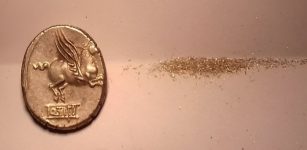 Romans Were Early Pioneers Of Recycling – New Evidence Reveals
Archaeology | Oct 17, 2023
Romans Were Early Pioneers Of Recycling – New Evidence Reveals
Archaeology | Oct 17, 2023 -
 Unas (Unis): First Pharaoh Who Decorated His Burial Chamber With Pyramid Texts
Featured Stories | Jun 3, 2021
Unas (Unis): First Pharaoh Who Decorated His Burial Chamber With Pyramid Texts
Featured Stories | Jun 3, 2021 -
 Egyptian Necropolis Of Asyut And Funerary Culture That Dates Back To Old Kingdom
Archaeology | Feb 24, 2020
Egyptian Necropolis Of Asyut And Funerary Culture That Dates Back To Old Kingdom
Archaeology | Feb 24, 2020 -
 Unusual 300,000-Year-Old Jawbone May Belong To An Unknown Vanished Human Lineage
Archaeology | Dec 18, 2023
Unusual 300,000-Year-Old Jawbone May Belong To An Unknown Vanished Human Lineage
Archaeology | Dec 18, 2023 -
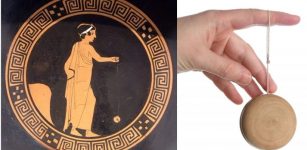 Oldest Yo-Yo Dates Back To 400-500 B.C
Ancient History Facts | May 13, 2019
Oldest Yo-Yo Dates Back To 400-500 B.C
Ancient History Facts | May 13, 2019 -
 Longstanding Cultural Continuity At Oldest Occupied Site In West Africa – New Study
Archaeology | May 4, 2023
Longstanding Cultural Continuity At Oldest Occupied Site In West Africa – New Study
Archaeology | May 4, 2023 -
 Secret Group Searching For Ancient Giants’ Skeletons In NZ Worries Archaeologists
Archaeology | Mar 19, 2020
Secret Group Searching For Ancient Giants’ Skeletons In NZ Worries Archaeologists
Archaeology | Mar 19, 2020 -
 Baby God Hermes Started His Life As A Liar And Trickster
Featured Stories | Dec 25, 2020
Baby God Hermes Started His Life As A Liar And Trickster
Featured Stories | Dec 25, 2020 -
 Spectacular Vardzia Cave Monastery – Huge Underground Complex Founded By The ‘Mountain Queen’ Tamar
Featured Stories | Dec 28, 2015
Spectacular Vardzia Cave Monastery – Huge Underground Complex Founded By The ‘Mountain Queen’ Tamar
Featured Stories | Dec 28, 2015 -
 Top 5 Terrors Of The World’s Seas, Rivers And Lakes
Featured Stories | Mar 27, 2021
Top 5 Terrors Of The World’s Seas, Rivers And Lakes
Featured Stories | Mar 27, 2021 -
 Medieval Celtic Mystery Written In Konungs Skuggsja – The King’s Mirror
Featured Stories | Sep 13, 2018
Medieval Celtic Mystery Written In Konungs Skuggsja – The King’s Mirror
Featured Stories | Sep 13, 2018 -
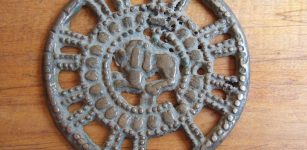 “Thogcha” – Thousand-Year-Old Tibetan Amulets And The Bon Culture
Ancient Technology | Dec 11, 2021
“Thogcha” – Thousand-Year-Old Tibetan Amulets And The Bon Culture
Ancient Technology | Dec 11, 2021 -
 Saqqara New Discoveries: Fifth Dynasty’s Pyramid Complex That Belonged To Queen Setibhor
Archaeology | Apr 15, 2019
Saqqara New Discoveries: Fifth Dynasty’s Pyramid Complex That Belonged To Queen Setibhor
Archaeology | Apr 15, 2019 -
 Seven Times People Discovered The Americas And How They Got There
Featured Stories | Sep 9, 2022
Seven Times People Discovered The Americas And How They Got There
Featured Stories | Sep 9, 2022 -
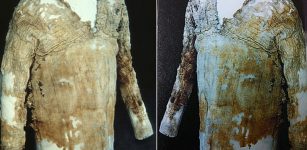 Tarkhan Dress – The World’s Oldest Woven Garment
Archaeology | Feb 24, 2016
Tarkhan Dress – The World’s Oldest Woven Garment
Archaeology | Feb 24, 2016 -
 Huge Unknown Ancient Lost World Discovered Inside Giant Sinkhole In China
News | May 19, 2022
Huge Unknown Ancient Lost World Discovered Inside Giant Sinkhole In China
News | May 19, 2022 -
 Mystery Of The Ancient Reptilian Gods Remains A Complex Subject – Alien Worlds – Part 2
Featured Stories | Feb 9, 2022
Mystery Of The Ancient Reptilian Gods Remains A Complex Subject – Alien Worlds – Part 2
Featured Stories | Feb 9, 2022 -
 Unexplained Encounters With Unknown Beings In California – Old And Modern Reports
Featured Stories | Mar 11, 2024
Unexplained Encounters With Unknown Beings In California – Old And Modern Reports
Featured Stories | Mar 11, 2024 -
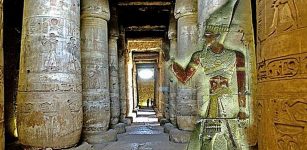 Abydos: One Of The Most Important Cities Of Ancient Egypt
Civilizations | Jul 15, 2016
Abydos: One Of The Most Important Cities Of Ancient Egypt
Civilizations | Jul 15, 2016 -
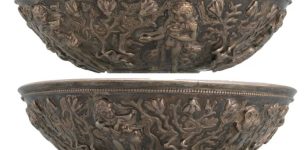 Surprising Discovery Reveals Ancient Tibetan Bowl Shows Alexander The Great – The Jewish Version And Not The Homer’s Iliad
Archaeology | Apr 28, 2022
Surprising Discovery Reveals Ancient Tibetan Bowl Shows Alexander The Great – The Jewish Version And Not The Homer’s Iliad
Archaeology | Apr 28, 2022



